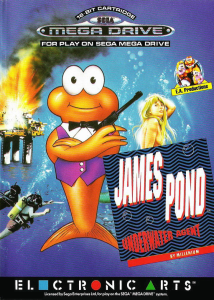
James Pond: Underwater Agent is a 1990 platform video game that was developed by British video game developer Millennium Interactive and published by Millennium Interactive and Electronic Arts for the Amiga, Atari ST, Acorn Archimedes, and Sega Genesis. It was the first in the James Pond series of games.

Sonic the Hedgehog is a 1991 platform game developed by Sonic Team and published by Sega for the Genesis/Mega Drive. It was released in North America on June 23 and in PAL regions and Japan the following month. Players control Sonic the Hedgehog, who can run at near supersonic speeds; Sonic sets out on a quest to defeat Dr. Robotnik, a scientist who has imprisoned animals in robots and seeks the powerful Chaos Emeralds. The gameplay involves collecting rings as a form of health, and a simple control scheme, with jumping and attacking controlled by a single button.
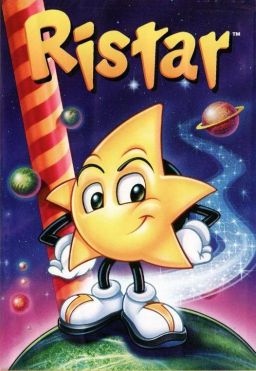
Ristar is a 1995 platform game developed and published by Sega for the Sega Genesis. The game stars an anthropomorphic cartoon star who uses his hands and long, stretchable arms to both move and fight enemies. Reception for the game was generally positive, but the game's initial release was overshadowed due to the imminent ending of the Genesis's lifecycle and the succession of the Sega Saturn and other fifth generation video game consoles.

Sonic & Knuckles is a 1994 platform game developed and published by Sega. Players control Sonic the Hedgehog or Knuckles the Echidna in their quests to save Angel Island; Sonic tries to stop Doctor Robotnik from re-launching his orbital weapon, the Death Egg, while Knuckles scuffles with Robotnik's minion, EggRobo. Like previous Sonic games, players traverse side-scrolling levels at high speeds while collecting rings and defeating enemies.

Altered Beast is a 1988 beat 'em up arcade video game developed and published by Sega. The game is set in Ancient Greece and follows a player character chosen by Zeus to rescue his daughter Athena from the demonic ruler of the underworld, Neff. Through the use of power-ups, the player character can assume the form of different magical beasts. It was ported to several home video game consoles and home computers. It was the pack-in game for the Mega Drive when that system launched in 1988.

Alex Kidd in the Enchanted Castle is a side-scrolling platform game developed and published by Sega for the Genesis. It is the only 16-bit platform game starring Alex Kidd, and the fifth game in the Alex Kidd series of video games.
Michael Jackson's Moonwalker is the name of several video games based on the 1988 Michael Jackson film Moonwalker. Sega developed two beat 'em ups, released in 1990; one released in arcades and another released for the Sega Genesis and Master System consoles. U.S. Gold also published various games for home computers the same year. Each of the games' plots loosely follows the "Smooth Criminal" segment of the film, in which Jackson rescues kidnapped children from the evil Mr. Big, and incorporates synthesized versions of some of the musician's songs. Following Moonwalker, Jackson collaborated with Sega on several other video games.
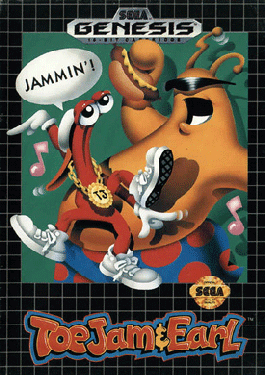
ToeJam & Earl is an action game developed by Johnson Voorsanger Productions and published by Sega for the Genesis console. Released in 1991, it centers on ToeJam and Earl—alien rappers who have crash-landed on Earth. As they attempt to escape the planet, players assume the role of either character and collect pieces of their wrecked spacecraft. It references and parodies 1980s and early 90s urban culture and is set to a funk soundtrack. ToeJam & Earl's design was heavily influenced by the role-playing video game Rogue (1980) and derived various features from the game, such as the random generation of levels and items. As such, ToeJam & Earl is often considered to be an example of a roguelike game.

Streets of Rage 2, known as Bare Knuckle II in Japan, is a 1992 side-scrolling beat 'em up video game published by Sega for the Genesis/Mega Drive. A sequel to Streets of Rage (1991), the characters Axel Stone and Blaze Fielding return while the game also introduces two new characters: Max Thunder, and Eddie "Skate" Hunter, the younger brother of Adam Hunter from the first game.

Bonanza Bros. is a 3D-style, 2D side-scrolling stealth action game developed and released by Sega in 1990. It is one of the earliest arcade games powered by the Sega System 24 arcade system board. It was ported to various home systems, including the Mega Drive/Genesis, Master System, PC-Engine/TurboGrafx-CD, and several home computers.

Castle of Illusion Starring Mickey Mouse is a 1990 platform game developed and published by Sega and released for the Mega Drive/Genesis. An 8-bit version of the game was later released for the Master System and Game Gear. The game follows Mickey Mouse on a quest to save Minnie Mouse from the evil witch Mizrabel. It is the first game in Sega's Illusion video game series starring Mickey.

Fantasia is a side-scrolling video game developed by Infogrames and produced by Sega for its own Mega Drive/Genesis system. The game was loosely based on the film of the same name.

Sonic the Hedgehog 2 is a 1992 platform game developed by Aspect and published by Sega for the Master System and Game Gear. It is the sequel to the 8-bit Sonic the Hedgehog (1991) and follows Sonic as he attempts to get the Chaos Emeralds back to rescue his friend Miles "Tails" Prower from Dr. Robotnik. Like the first Sonic the Hedgehog, players run through levels at high speeds while collecting rings and defeating enemies. Although it shares the same title with Sonic the Hedgehog 2 for the Sega Genesis and their releases coincided, the games have little in common and share no levels.
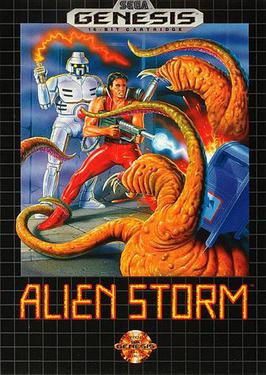
Alien Storm (エイリアンストーム) is a beat 'em up shooter released as an arcade video game by Sega in 1990. It was ported to the Genesis/Mega Drive and Master System. The Mega Drive version was re-released on Wii's Virtual Console in 2007 and was also included on Sonic's Ultimate Genesis Collection for Xbox 360 and PlayStation 3. The game was also re-released on the Nintendo Switch Online + Expansion Pack in 2022.
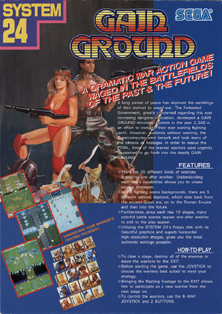
Gain Ground is an action game with strategy elements released as an arcade video game by Sega in 1988. It was ported to the Master System, Mega Drive/Genesis, and TurboGrafx-CD.

Golden Axe II is a side-scrolling beat 'em up video game developed and published by Sega, first released on the Sega Mega Drive in December 1991. It is the home console sequel to the popular game Golden Axe, marking the second game in the series, though the arcade did see a sequel of its own in 1992, titled Golden Axe: The Revenge of Death Adder. Golden Axe II was only released on the Mega Drive, while the original was released on many other platforms. The game later appeared in Sonic's Ultimate Genesis Collection for Xbox 360 and PlayStation 3, as an iOS app on iTunes, and on the Nintendo Switch Online + Expansion Pack.
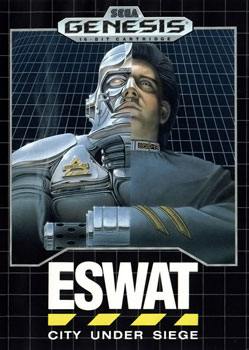
ESWAT: City Under Siege, released in Japan as Cyber Police ESWAT, is a 1990 side scrolling action platform video game developed and published by Sega for the Sega Genesis and Sega Master System video game consoles.

Crack Down (クラックダウン) is a run and gun arcade game released by Sega in 1989 and ported to the Sega Mega Drive/Genesis in 1990 in Japan and 1991 in North America by Sage's Creation. It was also ported and released to a number of home computer platforms by U.S. Gold.
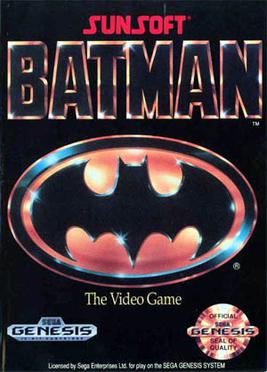
Batman is a video game developed by Sunsoft and released for the Sega Mega Drive in 1990. It was inspired by the 1989 Tim Burton-directed Batman film. The game is more faithful to the film's plot than the NES game of the same name and includes levels in which the player controls Batman's vehicles.
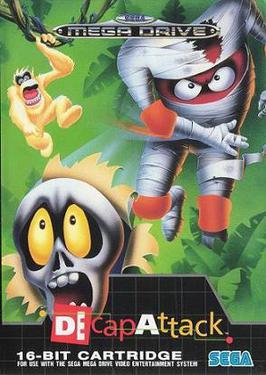
Decap Attack is a 1991 platform game developed by Vic Tokai and published by Sega for the Genesis. The game is a westernized version of the 1990 Japanese Mega Drive game Magical Hat no Buttobi Tābo! Daibōken, with the art, plot, music, and level designs all being changed. Both are updates of the late 1980s games Kid Kool and Psycho Fox. The game has also been released as part of several emulated compilations.


















